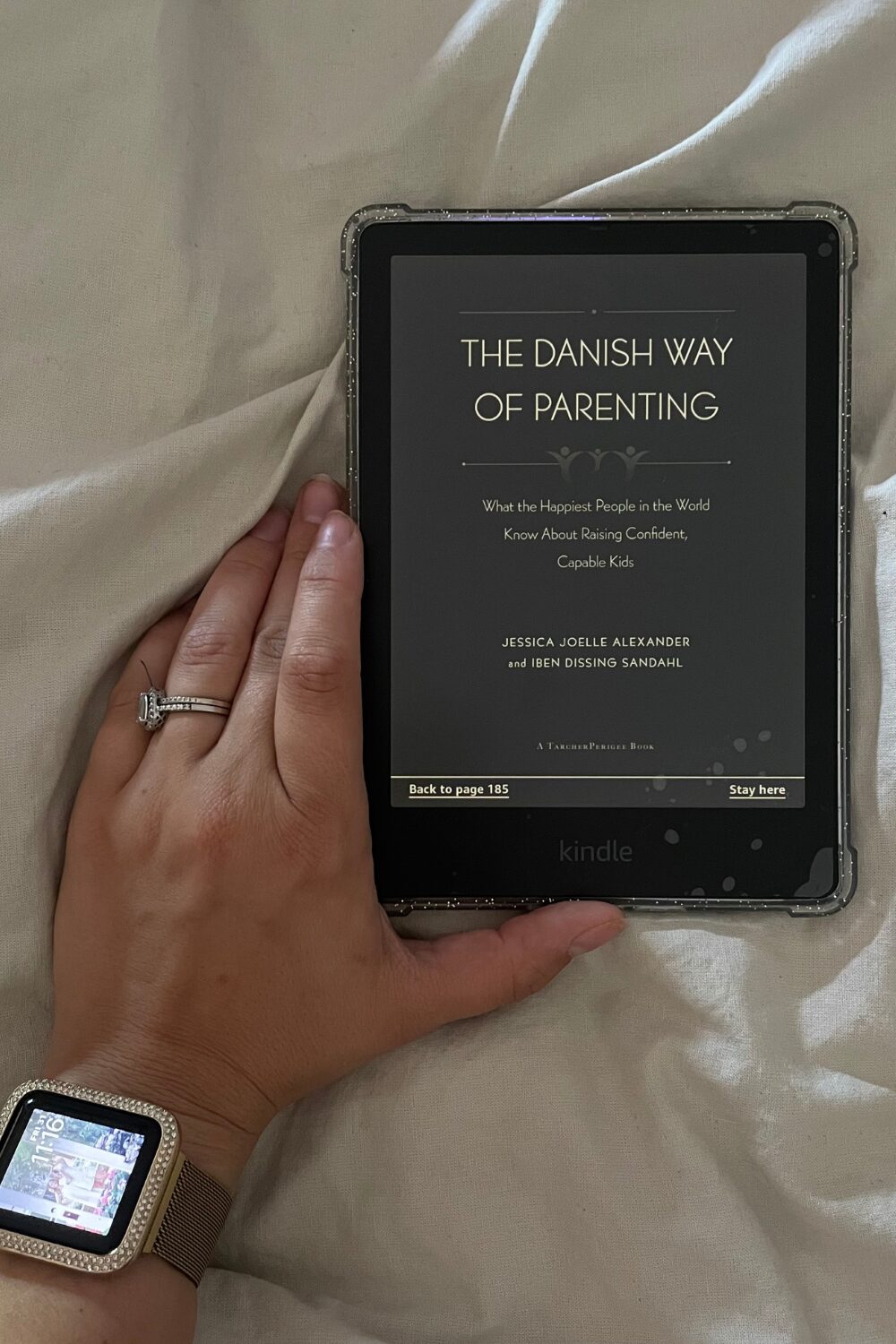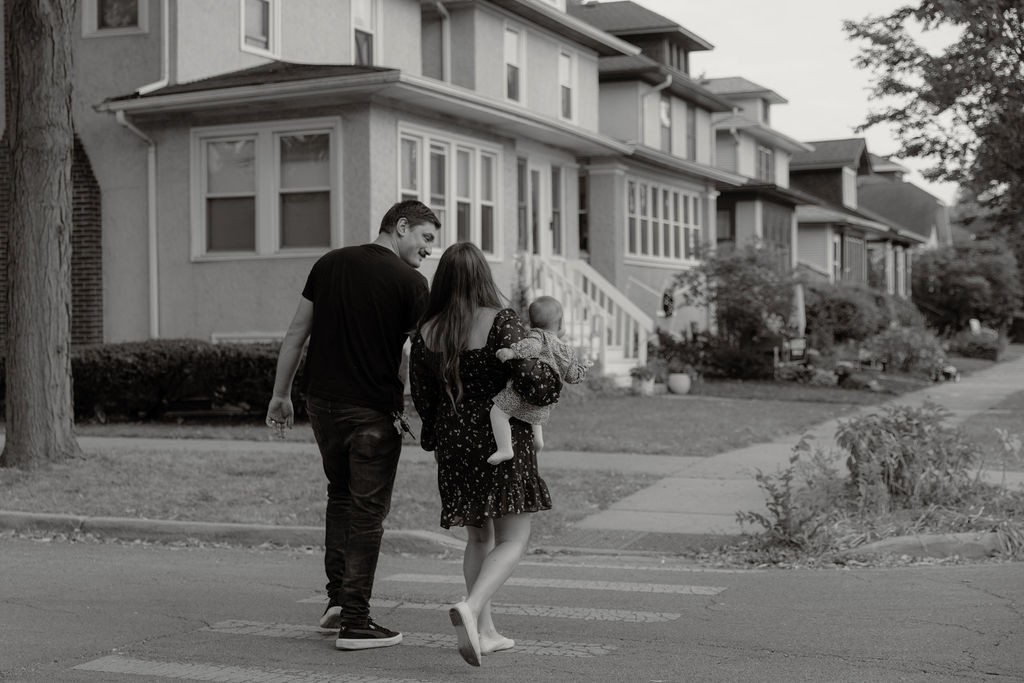Book Review: Unraveling the Danish Approach with “The Danish Way of Parenting”

Explore the unique and effective parenting approach from Denmark as we delve into the enlightening book, “The Danish Way of Parenting.” Learn how the principles of play, authenticity, reframing, empathy, and no ultimatums (P.A.R.E.N.T) contribute to raising happy, confident children. This review offers insights into why Denmark consistently ranks as having the happiest children in the world.
The Danish Way of Parenting, penned by Jessica Joelle Alexander and Iben Dissing Sandahl, is an enlightening book that presents a fresh perspective on parenting. It provides a comprehensive understanding of a Danish-style upbringing, which is starkly different from the traditional approaches we often encounter.
P for Play
One of the key principles of the Danish parenting model is ‘play’. Danish parents encourage their children to play freely which nurtures creativity, problem-solving skills, and resilience. Play is not merely seen as a leisure activity but as a crucial element of child development. “Happy kids grow up to be happy adults who raise happy kids, and so on” (Pg. 189-190). In the words of Mr. Rogers, “Play is often talked about as if it were a relief from serious learning, but for children play is serious learning” (pg 270). One interesting fact about play is the link between play and anxiety. “Free play teaches children to be less anxious. What if we told you that free play teaches children to be less anxious? It teaches them resilience. And resilience has been proven to be one of the most important factors in predicting success as an adult” (pg 295). In Danish culture there is even a word for the “free-time” part of school, skolefritidsordning.
As someone who was homeschooled, I resonate with this concept. My siblings and I spent hours playing boat, covered wagon, spies, Robin Hood… We were able to explore and act out what we were reading about or learning in school. I think it’s a huge reason why history is still my favorite topics / subjects. In page 313 the authors talked about children needing the space to trust and allow themselves to master things on their own. “This creates genuine self-esteem and self-reliance because it comes from the child’s own internal cheerleader, not from someone else” (313). Play is truly one of the best gifts you as a parent can give to a child.
“Resilience isn’t cultiveated by avoiding stress, you see, but by learning how to tame and master it.” (pg 374).
Did you know: Lego comes from the Danish word, “leg godt” which means “play well”. Lego was created by a Danish carpenter in 1932.
A for Authenticity
The concept of ‘authenticity’ is another cornerstone of Danish parenting. Parents are encouraged to be honest with their children, without exposing them to unnecessary worries. This helps in fostering a sense of trust and open communication within the family.
You can see this value in Danish fairytales. The authors use the example of The Little Mermaid, an Andersen fairy tale. In the original story, the Little Mermaid turns into sea foam because of sadness. The authors point out how our English versions of the stories have been altered, but in older Denmark versions the ending is much more vague. “Danes believe that tragedies and upsetting events are things we should talk about too. We learn more about character from our sufferings than from our successes; therefore, it’s important to examine all parts of life” (pg 489). This is what authenticity looks like in Danish culture.
Another part of authenticity is how you praise and encourage your children. I grew up with a mom from the East Coast. In my experience, her culture valued truth at all costs. If I was not good at something she would tell me. This paired with my Dad’s midwestern hard-working mindset set me up for what I have seen as resilience. I also think my mom instilled in me to not prioritize things as a success marker. Sorry for another long quote but this one is just too good.
“Being too pressured or praised, children may learn to do things for external recognition reather than for internal satisfaction, which becomes a default setting for life. It encourages extrinsic goals: needing something outside themselves to make them happy. This may bring success by some people’s standards, but it won’t necessarily bring them that deep sense of internal happiness and well-being we are all striving for. As we saw earlier, it can actually breed anxiety and depression” (520-522).
In Danish parenting they focus on the task instead of overcomplimenting the child. This focus will help prioritize the work involved along with teaching humility. Children will then get used to the feeling of being able to master a skill rather than thinking they are already or should already be a master of a skill. This will instill so much resilience in a child.
“Emotional honesty, not perfection, is what children truly need from their parents” (502).
Examples of praise from The Danish Way of Parenting (page 583)
- “I like the way you tried putting the puzzle pieces together again and again. You didn’t give up and you found a way to put it together!”
- “You practiced that dance so many times and the effort really showed today! You danced really well!”
- “I am so proud of you for how you shared your snack with your brother. It makes me so happy to see you sharing.”
- “It was a long, difficult assignment, but you stayed at it and got it done. I am so proud of you for how you stayed focused and kept working. Well done!”
Alexander, Jessica Joelle,Sandahl, Iben. The Danish Way of Parenting (Kindle Locations 584-589). Penguin Publishing Group. Kindle Edition.
R for Reframing
‘Reframing’ is a method used by Danish parents to help children view their problems and challenges in a positive light. Instead of dismissing their children’s fears or frustrations, they help them see these situations as opportunities for growth.
This is an area I need to work on for myself and is a huge reason why I use so much Cognitive therapy for myself and my clients. It all has to do with perspective. I love this example given in the beginning of the chapter for reframing from Winne-the-Pooh,
“It’s snowing still,” said Eeyore gloomily. “So it is.” “And freezing.” “Is it?” “Yes,” said Eeyore. “However,” he said, brightening up a little, “we haven’t had an earthquake lately.”
A. A. MILNE, WINNIE-THE-POOH
Danish culture doesn’t ignore negativity. They will look at it from another angle or another side of a situation. They choose the good in people instead of the bad. I’ve been telling myself to do this more, “look for the good”. The book describes this perspective as a realistic optimist. Those who are negative tend to ignore positive information. This can bring you down and prevent you from seeing what is positive. Overly positive people will ignore the negative information which can leave you vulnerable and naive. “Realistic optimists merely filter out unnecessary negative information” (pg 2478). Therefore, be in touch with reality by focusing on the positive angles — that’s how you will be a realistic optimist.
“We don’t think of our perception as a learned way of seeing things (often picked up from our parents and our culture). We see it as just the way things are. This set way of “the way things are” is called a “frame,” and this frame through which we see the world is our perception. And what we perceive as the truth feels like the truth” (pg 659-661).
A beautiful way reframing is played out in parenting is in the way we label children.
“So much of what we think about ourselves as adults comes from the labeling we were given as children—lazy, sensitive, selfish, stupid, smart. Think about it: What are your beliefs about who you are, and how many of them came from what you were told as a child? Many of us continue to live up to and compare ourselves with these labels unconsciously for the rest of our lives. By separating ourselves from these labels, we open up new paths of change for ourselves and our children” (751-755).

Reauthoring in parenting
The authors share about how they use something called “reauthoring” in their work with parents and children. Iben uses the phrases a child will say about themselves. Where did the label of laziness or scattered come from? “separating the person from the problem makes us more able to feel like active agents in our own lives to combat the problem” (pg 769). Working to reframe labels and using reauthoring helps adults and children see the problem as simply the problem and no longer a way to identify with or be defined by. As parents we can use language that separates the behavior from the child. No “stubborn child” or “the difficult one” — try reframing to focus on the positive aspects of the behavior.
“We feel what we think”
– pg 2478
Tips for reframing from the Danish Way of Parenting
- Pay attention to your negativity
- Practice reframing
- Use less limiting language
- Try externalization language: separate the actions form the person
- Rewrite your child’s narrative to be more loving.
- Use supporting language
- Use humor
E for Empathy
‘Empathy’ is deeply ingrained in Danish society and is taught to children from a young age. Danish parents believe in understanding and sharing the feelings of others, which fosters a strong sense of social responsibility in children.
The biggest take away I took from this chapter was the differences between American culture and Danish culture. American culture is an “everyone out for themselves” perspective. It was been ingrained in the way we do things. In a way it is what makes us American and independent, however, with this there are some negatives. I thought the data in the Danish Way of Parenting about competition, narcissism and empathy was fascinating.
The authors start talking about what empathy is. As a therapist I am often shocked by how many people do not know the definiation of empathy and where it comes from. “Empathy is the ability to recognize and undestand the feelings of others. It is the ability to feel what someone else feels — not only to feel fro him but to feel with him. Simply put, it’s walking a mile in someone else’s shoes” (906).
The authors refer to a study that has shown a drop in empathy from 50 % in young people in the U.S. since the 80s and 90s. The level of narcissism has increased twofold. Now, narcissism is the opposite of empathy.
“Narcissism is an inflated view of the self, which tends to separate the self from others and to inhibit formation of meaningful relationships. The characteristics of narcissists are such that people focus on themselves so much that they lose focus on caring about other people’s needs” (pg 921).
That’s terrifying! Here’s another long quote that hit home for me as a new mom.
“Let’s think for a moment about the mothers you have met. How many truly open up and share what is going on with their kids? How many are really brave enough to be vulnerable and admit they aren’t sure if they are doing things right? These days, it seems like fewer and fewer moms are able to show their vulnerability as more and more standards are added to the list of what it means to be a “good” mother—standards to live up to and, frankly, compete with other mothers over. Whether it’s what you feed your child (breast milk, organic, sustainable, and so on), extracurricular activities (how many they are engaged in, and how successful they are at them), or education, there is often a sense of one-upmanship in what should be a simple everyday conversation. Of course, this sense of escalating competition isn’t limited to mothering. It permeates all kinds of discourse. It can be very subtle, but if you pay attention, you may be surprised how often you notice it’s just under the surface. Many people feel afraid of really opening up and being vulnerable because they don’t want to be judged or rejected. And in this fear, many relationships get reduced to superficialities” (pg 943-945).
As a mom I am convinced that this is not how I want to live. We can do better and model connection over competition to our kids.
“Competition and striving to be number one are part of what defines being American.”
Alexander, Jessica Joelle,Sandahl, Iben. The Danish Way of Parenting (Kindle Locations 936-937). Penguin Publishing Group. Kindle Edition.
N for No Ultimatums
The principle of ‘No Ultimatums’ means Danish parents avoid power struggles by offering choices within boundaries. This method respects the child’s autonomy while still providing necessary guidance. I love thinking about what autonomy looks like inside parenting and family systems. There’s such a balance between working as a family together and also giving each member their own autonomy. Teaching children how to think and create ideas on their own is very powerful.
I haven’t personally tackled this area of parenting yet, discipline. However, this is a topic that I am very curious about. The book talks about four parenting styles. I have heard of all of these parenting styles but I think there are more. Another parenting book I have read that I enjoyed was Positive Parenting. I enjoyed that book as well and they talk about different methods of parenting.
Methods of Parenting
Authoritarian: Parents that demand from children but are not responsive themselves. They want obedience and have high standards. “Children of authoritarian parents tend to do well in school but sometimes suffer from low self-esteem, depression, and poor social skills” (pg 1173).
Authoritative: NOT authoritative. Parents who want obedience but are also responsive. They have high standards but are also supportive of their discipline. The book shared that, “Children of authoritative parents are rated more socially and intellectually competent than those of other parents”.
Permissive: parents who are highly responsive but do not require mature behavior from their children. They depend on self-regulation from the child. “Children of these parents tend to have problems in school and with their behavior in general” (pg 1179).
Uninvolved: These parents are not responsive and do not require obedience. They are not necessarily neglectful. “Children of uninvolved parents do most poorly in all areas.
My biggest take away from this chapter is, “You will have a much more positive influence and a genuinely closer relationship if you foster an atmosphere of respect and calmness in which there is no fear of blame, shame, or pain” (1228-1230).
“Remember to distinguish the behavior from the child There isn’t a bad child, just bad behavior. And there is also bad parenting” (pg 1352-1353).
T is for Together
This was my favorite part of the book. If you haven’t read my blog post about how I use Hygge (hooga) for self-care and for my clients you can check it out here. I love the concept of Hygge. Hygge means “to cozy around together”. It transformed how I viewed Chicago winters. My seasonal depression or “tiredness” went away with the perspective of cozy and connection. I decorate my home with hyggee in mind. “Feeling connected to others gives meaning and purpose to our lives, and this is why the Danes value hygge so highly” (pg 1418). This concept is very different from the philosophy of self-reliance that built the United States. Coming from a Christian perspective, hygge aligns with my values completely.
There’s a section in the book that talks about “New Moms and the Danish Way of Togetherness”. In Danish culture, a new mom is given the names of other new moms in her area. The midwife is primarily in charge of passing along this information so that the women can form groups and meet up once a week to share parenting. The book describes these women as acting as sponsors and checking up on the new mom if she doesn’t show up. Could you imagine if you had that kind of support?
Tips for togetherness:
- Make a pact with your family to not be just about “I”.
- Be in the moment together.
- Practice pre-framing (imagine and talk aboutwhat kind of experience you’d like you and your family to have before the event happens)
- Have fun together!
- Make it cozy.
- Take a break from complaining and focus on the good.
- Practice reframing if you get stressed.
- Keep things simple.
- Stay present and encourage your kids to stay present too.
- Be connected
- Encourage play
- Encourage team building
- Confide and share
- Start a mothers’ group
- Teach your children that the family is a team.
- Celebrate everyday togetherness
- Sing together — especially around the holidays.
The Danish Way of Parenting is a fascinating read that challenges conventional parenting norms and introduces us to a culture that values happiness and well-being above all. It’s a must-read for anyone interested in understanding the secret behind Denmark’s consistently high rankings in happiness.










